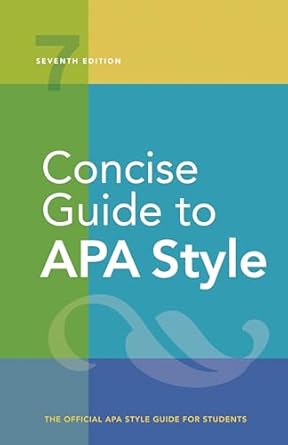[toc]
reducing bias in writing essential guidelines
Concise Guide to APA Style: 7th Edition (OFFICIAL)
Page 83 Review
Reducing Bias in Writing: A Critical Analysis
In academic and professional writing, maintaining objectivity and avoiding bias is paramount.
The provided text offers valuable guidelines for achieving this goal, focusing on language usage and representation of different groups.
Let’s delve into a detailed analysis of these guidelines.
The Importance of Inclusive Language
The text emphasizes the significance of using respectful and inclusive language when referring to various communities, particularly those with disabilities.
It highlights the evolving nature of labels and the potential for disagreement regarding preferred terminology.
As the text states, “the community uses, even when that label is adjectival (note, how- ever, that not everyone who has hearing loss identifies as Deaf).
In particular, the use of labels where disability is concerned is evolv- ing, and people may disagree about the preferred approach.” This underscores the need for writers to be sensitive to the nuances of language and to prioritize the preferences of the individuals and groups they are writing about.
Furthermore, the text advocates for considering person-first and identity-first language. “When writing about disability, person-first language (e.g., “a person with paraplegia” rather than “a paraplegic’), identity-first language (e.g., “an autistic person” rather than “a person with autism”), or both may be acceptable depending on the group you are writing about.” This illustrates that there is no one-size-fits-all approach and that writers should be informed about the preferences within specific communities.
Operational Definitions and Clear Labeling
The text stresses the importance of providing clear and operational definitions of groups early on in a paper.
According to the text, “If you provide oper- ational definitions of groups early in your paper (e.g., “participants scoring a minimum of X on the Y scale constituted the high verbal group, and those scoring below X constituted the low verbal group’), the best practice is to describe participants thereafter in terms of the measures used to classify them.” This promotes transparency and avoids ambiguity in the interpretation of research findings.
Moreover, it cautions against using pejorative labels or abbreviations that lack clarity.
As the text points out, “A pejorative label should not be used in any form.
Abbreviations or series labels for groups usually sacrifice clarity and may be problematic: “LDs” or “LD group” to describe people with specific learning difficulties is problematic; “HVAs’ for “high verbal ability group” is difficult to decipher.” Instead, the text recommends ensuring that operational group labels are clear and appropriate, such as “group with dysgraphia.”
Avoiding False Hierarchies and Biased Comparisons
A crucial aspect of unbiased writing is avoiding the establishment of false hierarchies.
The text warns against using one group as the standard against which others are judged, especially without justification. “Bias occurs when writers use one group (often their own group) as the standard against which others are judged (e.g., using citizens of the United States as the standard without specifying why that group was cho- sen).” This can lead to the stigmatization of individuals with differences.
The text specifically addresses the problematic use of terms like “normal” and the importance of choosing appropriate comparison groups. “For example, usage of “normal” may prompt readers to make the comparison with “abnormal,” thus stigmatizing individuals with differences.
Likewise, contrasting lesbians with “the general public” or “normal women” portrays lesbians as marginal to society.” It suggests using parallel designations for groups, particularly when presenting racial and ethnic information.
Subtle Bias in Group Presentation Order
The text highlights a subtle but important point: the order in which social groups are presented can imply bias. “Be aware that the order of social group presentation may imply that the first-mentioned group is the norm or standard and that later-mentioned groups are abnormal or deviant.” This is exemplified by phrases like “men and women” and “White Americans and racial minorities,” which can subtly reinforce perceived dominance.
Conclusion
These guidelines provide a solid foundation for writers seeking to minimize bias and promote inclusivity in their work.
By being mindful of language choices, providing clear definitions, avoiding false hierarchies, and being aware of subtle biases in presentation, writers can contribute to a more equitable and respectful representation of diverse groups within society.
Buy full ebook for only $18: https://www.lulu.com/shop/american-psychological-association/concise-guide-to-apa-style-7th-edition-official/ebook/product-rmzpq54.html?page=1&pageSize=4

